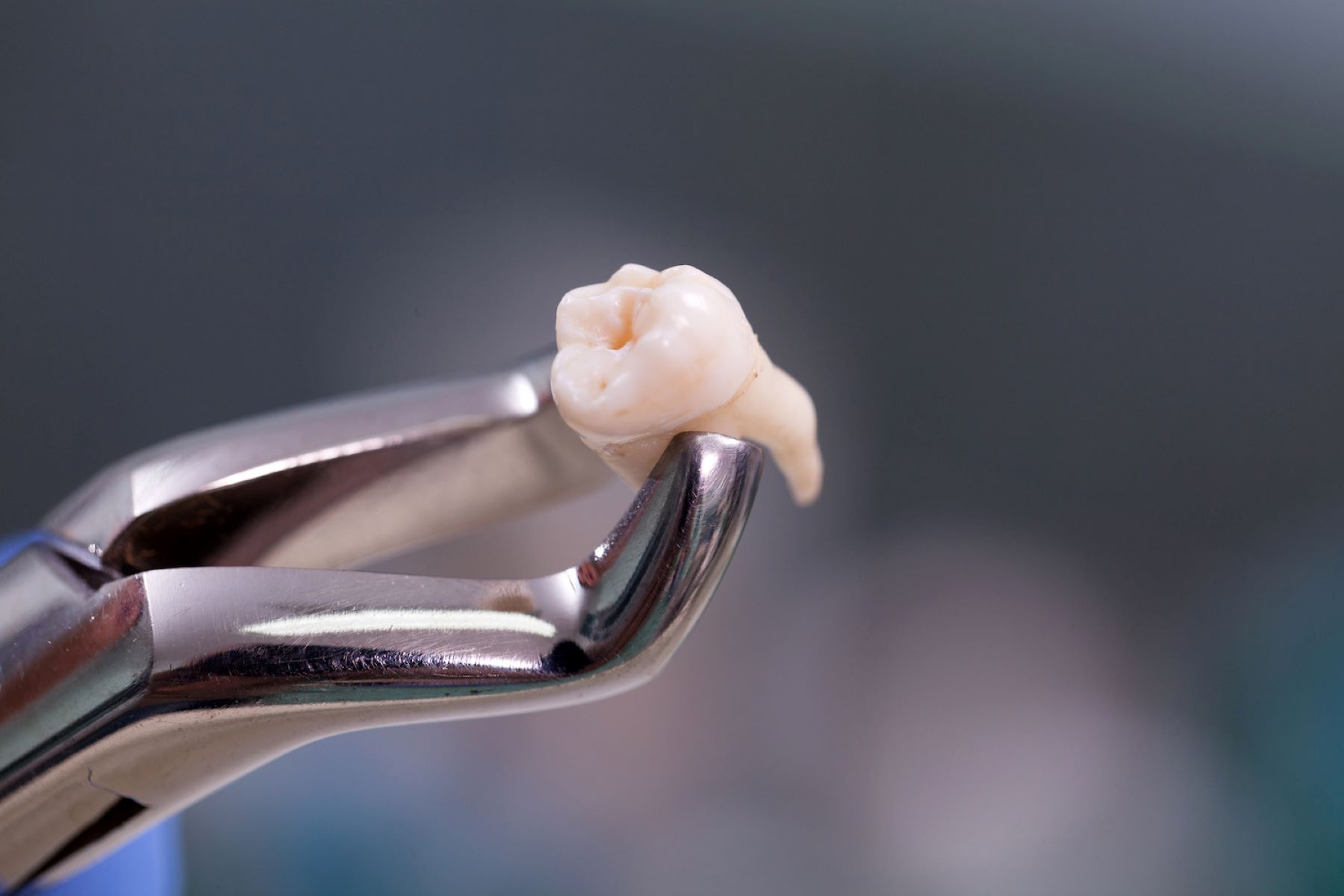Home>Misc>Featured>How Does Tobacco Affect Athletic Performance


Featured
How Does Tobacco Affect Athletic Performance
Modified: January 2, 2024
Discover the impact of tobacco on athletic performance and uncover the featured insights on how smoking affects your physical abilities. Learn more now!
Introduction
Tobacco use has long been a prevalent habit in society, affecting millions of individuals worldwide. From cigarettes to cigars and even smokeless tobacco products, the detrimental effects of tobacco on health are well-documented. But how does tobacco impact athletic performance?
Athletes constantly strive for excellence, pushing their bodies to the limit in order to achieve peak performance. However, the use of tobacco can hamper their progress and hinder their ability to reach their full potential. In this article, we will explore the various ways in which tobacco affects athletic performance, particularly in relation to the respiratory system, cardiovascular system, endurance and stamina, muscle strength and recovery, as well as concentration and reaction time.
It is important to note that tobacco use encompasses not only smoking but also the use of smokeless tobacco products, such as chewing tobacco and snuff. Regardless of the method of consumption, tobacco poses significant risks to athletic performance. By understanding these risks, athletes can make more informed decisions about their lifestyle choices and take steps to improve their overall performance.
Throughout this article, we will delve into the physiological impact of tobacco on athletic performance and discuss strategies for quitting tobacco in order to enhance athletic ability. Whether you are an athlete yourself or simply interested in the relationship between tobacco and physical performance, the following sections will provide valuable insights and guidance.
The Effects of Tobacco on Respiratory System
Tobacco use has a significant impact on the respiratory system, compromising lung function and overall athletic performance. The harmful chemicals present in tobacco smoke, such as nicotine, carbon monoxide, and tar, can cause several detrimental effects.
Firstly, smoking damages the airways and decreases the efficiency of the lungs. The smoke irritates the bronchial tubes, causing inflammation and mucus production, which can lead to chronic bronchitis. This condition, characterized by a persistent cough and excessive phlegm, can impair an athlete’s ability to breathe properly and maintain optimal oxygen intake during physical activity.
Additionally, tobacco smoke damages the tiny hair-like structures called cilia that line the airways. These cilia are responsible for moving mucus out of the lungs, helping to clear them of harmful substances. When the cilia are impaired, mucus and toxins accumulate in the airways, increasing the risk of respiratory infections.
Furthermore, smoking leads to the constriction of the air passages, making it harder for air to flow in and out of the lungs. This reduces lung capacity and limits an athlete’s ability to take in oxygen and expel carbon dioxide efficiently, leading to decreased endurance and stamina.
Long-term smoking also increases the risk of developing serious respiratory conditions such as chronic obstructive pulmonary disease (COPD) and lung cancer. COPD is a progressive disease that causes breathing difficulties and irreversible lung damage. This condition severely compromises an athlete’s lung function and hampers their ability to engage in strenuous physical activity.
In summary, tobacco use has severe consequences on the respiratory system, directly impacting an athlete’s ability to perform at their best. The inflammation, mucus production, and airway constriction caused by smoking all contribute to impaired lung function, reduced endurance, and increased susceptibility to respiratory diseases. Quitting tobacco and adopting a smoke-free lifestyle is crucial for athletes looking to optimize their respiratory health and enhance their athletic performance.
The Impact of Tobacco on Cardiovascular System
Tobacco use not only affects the respiratory system but also has a profound impact on the cardiovascular system, which plays a crucial role in athletic performance. The harmful substances in tobacco can lead to several detrimental effects on the heart and blood vessels.
Firstly, smoking tobacco causes damage to the lining of the blood vessels, resulting in the build-up of fatty deposits known as plaques. These plaques narrow the blood vessels, leading to a condition called atherosclerosis. Atherosclerosis restricts blood flow to the muscles, including the heart, and reduces the delivery of oxygen and vital nutrients to the cells. As a result, athletic performance is compromised, and the risk of heart-related issues, such as heart attacks and strokes, is significantly increased.
Furthermore, smoking increases the heart rate and blood pressure, forcing the heart to work harder to pump blood throughout the body. This can lead to an enlarged heart, reduced efficiency, and an increased risk of cardiovascular diseases. The decreased blood flow to the muscles and organs can result in decreased stamina, reduced endurance, and overall diminished athletic performance.
In addition, tobacco use negatively affects the blood’s ability to carry oxygen. Carbon monoxide, a toxic component in tobacco smoke, binds to hemoglobin in the blood, reducing its capacity to carry oxygen. This further impacts an athlete’s oxygen delivery to the muscles, leading to fatigue, decreased performance, and slower recovery times.
The combination of narrowed blood vessels, increased heart rate, elevated blood pressure, and reduced oxygen-carrying capacity puts significant stress on the cardiovascular system. Athletes who smoke are at a higher risk of developing cardiovascular diseases and experiencing adverse events during physical exertion, such as chest pain or irregular heart rhythms.
It is crucial for athletes to prioritize their cardiovascular health by quitting tobacco and adopting a smoke-free lifestyle. By doing so, they can improve blood flow, enhance cardiovascular function, increase oxygen delivery to the muscles, and reduce the risk of heart-related complications. Quitting tobacco not only improves athletic performance but also promotes overall health and well-being.
Tobacco’s Effects on Endurance and Stamina
Endurance and stamina are key components of athletic performance, enabling athletes to sustain prolonged physical activity and perform at their best. However, tobacco use can have detrimental effects on an athlete’s endurance and stamina, limiting their ability to excel in their chosen sport.
One of the primary ways in which tobacco impacts endurance and stamina is through its negative effects on the respiratory system. Smoking damages the airways, causes inflammation, and increases mucus production, leading to reduced lung function. This hampers an athlete’s ability to take in sufficient oxygen and expel carbon dioxide efficiently. Oxygenated blood is essential for energy production in the muscles, and a lack of oxygen can result in fatigue, diminished endurance, and decreased overall performance.
In addition, smoking tobacco leads to increased heart rate and elevated blood pressure. These changes put added strain on the cardiovascular system, making the heart work harder to pump blood. This extra effort diminishes an athlete’s stamina and ability to sustain physical activity for extended periods. The reduced blood flow to the muscles makes them more prone to fatigue, leading to decreased endurance and an overall decline in performance.
Furthermore, smoking tobacco impairs the body’s ability to recover effectively after physical exertion. The toxins in tobacco smoke interfere with the body’s natural healing processes, including muscle tissue repair and growth. This can result in delayed recovery times, increased muscle soreness, and prolonged fatigue. A slower recovery impedes an athlete’s ability to train consistently and perform at their optimal level.
It is important to note that the negative effects on endurance and stamina are not limited to traditional smoking. Smokeless tobacco products, such as chewing tobacco and snuff, also contain harmful chemicals that can compromise respiratory and cardiovascular function. Even occasional use of these products can have detrimental effects on an athlete’s performance.
To maximize endurance and stamina, athletes should prioritize their respiratory and cardiovascular health by quitting tobacco altogether. By adopting a smoke-free lifestyle, athletes can improve lung function, enhance oxygen transport, reduce heart rate and blood pressure, and promote efficient recovery. Quitting tobacco is a crucial step towards optimizing endurance and stamina, allowing athletes to reach their full potential in their chosen sport.
Tobacco’s Influence on Muscle Strength and Recovery
Muscle strength and efficient recovery are crucial for athletic performance, allowing athletes to perform at their best and achieve their goals. However, tobacco use has a negative impact on both muscle strength and the body’s ability to recover effectively.
Firstly, smoking tobacco affects the delivery of oxygen and nutrients to the muscles. The toxic chemicals in tobacco smoke, such as carbon monoxide, reduce the blood’s ability to carry oxygen. Oxygen is essential for energy production in the muscles, and a lack of it can result in decreased muscle strength and endurance. Moreover, the impaired blood flow caused by smoking limits the delivery of vital nutrients to the muscles, hindering their growth and repair.
Furthermore, smoking tobacco impairs the body’s natural healing and recovery processes. The toxins in tobacco smoke interfere with the formation of new blood vessels, known as angiogenesis, which is crucial for muscle repair and regeneration. This can lead to delayed recovery times, increased muscle soreness, and diminished muscle strength. Athletes who smoke may struggle to bounce back from intense workouts or injuries, making it difficult to maintain consistent training and optimal performance.
In addition, smoking increases systemic inflammation in the body. Chronic inflammation has been linked to reduced muscle strength and impaired recovery. The inflammatory response triggered by smoking interferes with the natural processes of muscle repair and can lead to the breakdown of muscle tissue.
Moreover, tobacco use can disrupt hormonal balance in the body. Smoking has been associated with lower levels of testosterone, a hormone critical for muscle growth and strength. Decreased testosterone levels can result in reduced muscle mass and diminished muscle strength.
To combat the negative effects of tobacco on muscle strength and recovery, athletes are encouraged to quit smoking and adopt a smoke-free lifestyle. By quitting tobacco, athletes can improve oxygen delivery to the muscles, enhance nutrient uptake, reduce inflammation, and restore hormonal balance. This will facilitate better muscle growth, improved strength, and enhanced recovery, allowing athletes to perform at their peak and achieve their athletic goals.
Impaired Concentration and Reaction Time due to Tobacco Use
Tobacco use not only affects physical health but also has a significant impact on cognitive function, including concentration and reaction time. These cognitive abilities are crucial for athletic performance, as they directly impact an athlete’s ability to make quick decisions, react to changing situations, and maintain focus during a game or competition.
One of the main ways in which tobacco impairs concentration and reaction time is through its effect on the central nervous system. Nicotine, the addictive substance in tobacco, acts as a stimulant and alters the functioning of the brain. While nicotine can temporarily enhance alertness and focus, the long-term use of tobacco can lead to dependency and withdrawal symptoms, which can disrupt concentration and mental clarity.
Additionally, smoking tobacco causes vasoconstriction, narrowing the blood vessels and reducing blood flow to the brain. This reduced blood flow deprives the brain cells of oxygen and nutrients, leading to cognitive difficulties such as decreased attention span, memory impairment, and reduced ability to process information quickly. These cognitive impairments can significantly impact an athlete’s performance, hindering their ability to react swiftly and make split-second decisions on the field or court.
Furthermore, smoking tobacco has been linked to increased levels of stress and anxiety, which can further affect concentration and reaction time. Stress and anxiety can impair cognitive function, making it challenging for athletes to stay focused and perform at their best under pressure.
It is important to note that the effects of tobacco on concentration and reaction time are not limited to smoking alone. The use of other tobacco products, such as chewing tobacco or snuff, can also have similar detrimental effects on cognitive function.
To optimize concentration and reaction time, athletes are encouraged to quit tobacco and adopt a smoke-free lifestyle. By quitting tobacco, athletes can improve blood flow to the brain, enhance cognitive function, reduce stress, and promote mental clarity. Incorporating healthy lifestyle habits, such as regular exercise and proper nutrition, can also support cognitive function and enhance athletic performance.
The Link between Tobacco and Decreased Athletic Performance
The relationship between tobacco use and decreased athletic performance is well-established, with numerous studies highlighting the negative impact of tobacco on various aspects of physical performance. Tobacco use, whether through smoking or the use of smokeless tobacco products, has been shown to compromise athletic abilities and hinder overall performance.
One of the key ways in which tobacco affects athletic performance is by impairing respiratory function. Smoking tobacco damages the airways, causes inflammation, and reduces lung capacity. The compromised respiratory system limits oxygen uptake and hampers the delivery of oxygen to the muscles, leading to decreased endurance, decreased stamina, and reduced overall performance.
In addition, smoking tobacco has a detrimental effect on cardiovascular health. The toxic chemicals in tobacco smoke damage the blood vessels, leading to atherosclerosis and reduced blood flow to the muscles. The decreased blood flow diminishes an athlete’s ability to deliver oxygen and nutrients to the muscles, further compromising their performance.
Muscle strength and recovery are also negatively impacted by tobacco use. The toxins in tobacco smoke interfere with muscle repair and growth, leading to slower recovery times, increased muscle soreness, and decreased muscle strength. This can limit an athlete’s ability to train consistently and reach their full potential.
Furthermore, tobacco use impairs cognitive function, including concentration and reaction time. Nicotine, the addictive substance in tobacco, alters brain function and can disrupt an athlete’s ability to make quick decisions, stay focused, and react swiftly to changing situations during a game or competition.
It is important to note that the negative effects of tobacco on athletic performance are not limited to traditional smoking. The use of smokeless tobacco products, such as chewing tobacco or snuff, can also have detrimental effects on various aspects of physical performance.
Quitting tobacco and adopting a smoke-free lifestyle is essential for athletes looking to optimize their athletic performance. By eliminating tobacco use, athletes can improve respiratory function, enhance cardiovascular health, promote efficient muscle recovery, and enhance cognitive abilities. Quitting tobacco not only benefits performance but also promotes overall health and well-being, allowing athletes to reach their full potential in their respective sports.
Strategies for Quitting Tobacco and Improving Athletic Performance
Quitting tobacco is a critical step towards improving athletic performance and overall health. While it may seem challenging, there are effective strategies that can help athletes successfully quit tobacco and optimize their physical abilities.
One of the most effective strategies for quitting tobacco is seeking support. Athletes can reach out to support networks, such as friends, family, coaches, or healthcare professionals, who can provide encouragement, guidance, and accountability throughout the quit journey. Support can also be found through support groups, counseling services, or helplines dedicated to helping individuals quit tobacco.
Another valuable strategy is setting a quit date and making a plan. By setting a specific date to quit tobacco, athletes can mentally prepare themselves for the change and create a roadmap towards success. Developing a personalized plan that includes strategies for managing cravings, identifying triggers, and finding healthy alternatives can greatly enhance the chances of quitting successfully.
Utilizing nicotine replacement therapies (NRTs) can also be beneficial. NRTs, such as nicotine gum, patches, or inhalers, can help alleviate withdrawal symptoms by providing controlled doses of nicotine without the harmful toxins found in tobacco smoke. Gradually reducing the nicotine dosage over time can assist in breaking the addiction and facilitating a smoke-free lifestyle.
Engaging in regular physical activity and exercise can greatly support the quitting process and improve athletic performance. Exercise not only helps to distract from tobacco cravings but also has numerous physical and mental health benefits. It can boost mood, reduce stress, increase lung capacity, and improve cardiovascular fitness, all of which contribute to better athletic performance.
Implementing stress-management techniques is also crucial. Nicotine often becomes a coping mechanism for stress, and quitting tobacco can lead to increased stress levels. Athletes can explore alternative stress-relief strategies, such as meditation, deep breathing exercises, yoga, or engaging in hobbies or activities they enjoy. These techniques can help manage stress and reduce the reliance on tobacco as a means of stress relief.
Regularly evaluating progress and celebrating milestones is an important aspect of the quitting process. Athletes can track their progress and reward themselves for every milestone achieved, whether it’s a week, a month, or a year without tobacco. Celebrating the small victories can keep athletes motivated and committed to their journey towards a smoke-free lifestyle.
Lastly, athletes should surround themselves with a healthy and supportive environment. Avoiding situations or people that may trigger the urge to smoke is essential. It can also be beneficial to engage in activities and spend time with individuals who support a smoke-free lifestyle, facilitating a positive and encouraging atmosphere.
By implementing these strategies and committing to a smoke-free lifestyle, athletes can not only improve their athletic performance but also enhance their overall health and well-being. Quitting tobacco is a journey, and with the right support, determination, and strategies in place, athletes can unleash their full potential on and off the field.
Conclusion
Tobacco use has a profound negative impact on athletic performance, compromising various aspects crucial for success. From the respiratory and cardiovascular systems to endurance, muscle strength, concentration, and reaction time, tobacco poses significant hurdles for athletes striving to reach their full potential. The detrimental effects of tobacco on physical and cognitive function cannot be ignored.
However, there is hope. By understanding the link between tobacco and decreased athletic performance and adopting strategies for quitting tobacco, athletes can enhance their abilities and improve their overall health and well-being.
Quitting tobacco is not an easy task, but with proper support, planning, and determination, it is achievable. Seeking support from friends, family, coaches, and healthcare professionals can provide the necessary encouragement and guidance throughout the quit journey. Setting a quit date and developing a personalized plan increases the likelihood of success.
Utilizing nicotine replacement therapies, engaging in regular physical activity, implementing stress-management techniques, and surrounding oneself with a healthy and supportive environment are all strategies that can aid in quitting tobacco and enhancing athletic performance.
Quitting tobacco is a journey, and it is important to celebrate every milestone achieved. Recognizing progress and rewarding oneself for accomplishments along the way can keep athletes motivated and committed to a smoke-free lifestyle.
By quitting tobacco, athletes can improve their respiratory function, enhance their cardiovascular health, optimize endurance and stamina, enhance muscle strength and recovery, sharpen concentration and reaction time, and ultimately improve their overall athletic performance.
It is my hope that this article has shed light on the detrimental effects of tobacco use on athletic performance and provided valuable insights and strategies for quitting tobacco. By taking steps towards a smoke-free lifestyle, athletes can unleash their full potential and excel in their chosen sports, while also safeguarding their long-term health and well-being.









